Bite Marks #120
In which I sample my way through a trio of Argentine spots offering traditional local dishes.
Let’s dive right in without preamble.
Grandmas’ Restaurant?
Las Nonas Ramona-Petrona, Tres Arroyos 399, Villa Crespo. I had this vague idea of doing a post that involved restaurants that were run by grandmas and grandpas, and figured the place to start was anywhere that had the familial title in its name. But that sort of fell apart when this first spot turned out to simply be an homage to one of the two owners’ two grandmothers, Ramona and Petrona, I gather. In various online interviews, the owners, Diego and Débora, talked about honoring her grandmothers both through the recipes used, and by hiring staff who were in the 60+ age range. None of the staff on-site during our visit fit that, as best I could tell. There was one older gentleman who spent the time seated in a chair near to the door, dozing on and off, but I never saw him do anything.
I was meeting up with a friend whom I hadn’t seen in years, and this seemed like it would be a nice casual spot to sit and chat for an hour or two.
The menu is short and simple, and basically just classic local dishes. We split a milanesa with mashed potatoes, and a bowl of gnocchi with a boloñesa sauce. Both were generous portions, we finished everything, it was all good, and pretty much like something you might get at home from grandma. So, it filled the bill on that basis. It’s also cheap, those plates rang in at 9000 and 11000 pesos, respectively.
And we finished off with another classic, the vigilante, which basically comes down to slaps of cheese and a choice of quince or sweet potato paste.
The story is that it was created in 1920 in a cantina in Palermo Viejo, a typical barrio that at the time was filled with compadritos. Okay, a tangent here, as there’s no direct translation, though the archaic English braggadocio or braggart probably comes close: “Compadritos were the guys who hung out on the streets of Buenos Aires around the turn of the century and who played a big part in popularizing tango. You may have seen them portrayed in old Argentine movies. They usually had a silk neck scarf and embroidered vests, and a “jopo”, which is a curl of hair that hangs over the forehead (something like the swirls of hair Elvis and James Dean used to have). A compadrito was reputed to have been a kind of macho, but amiable scoundrel, who descended from the gauchos. He carried a knife (originally used by gauchos for skinning cattle), he avoided work, and he lived for women and tango.” and delinquents (probably the closest translation of malevos that makes sense - I suppose, for the era, “swells and street punks” would be a good translation. The cantina stood near to the police station and was frequented by the police, and the dessert picked up the name from them, the vigilantes, or “watchers”.
Rapidly popularized throughout the country by the working class, it was quickly adopted by all sectors of the population, even the elite intellectuals. The proof of that is that in her book Borges a contraluz (“Borges illuminated”), Estela Canto relates that the great author, with his simple culinary tastes, would just order “beef, salad and the famous ‘cheese and sweet paste'” when he went to a restaurant.
Steakhouse Woe
Arde Brasas & Co., Dr. Pedro I. Rivera 4999, Villa Urquiza. Another one of those spots that got on my list and I don’t remember exactly how. I think it was someone’s recommendation when I was looking for places that had great milanesas de bife de chorizo. If you want, you can skip the rest of this particular review, as… it’s not one of those.
The space is a rather cold, industrial feeling spot - all hard surfaces of concrete, brick, and metal. There’s an open kitchen along one side that’s all tarnished metal that probably once gleamed. The menu, typical for a parrilla, lists many options for our lunch - I’m here with some folk from The Horde, our biweekly or so lunch group. Unfortunately, the menu is all show. Among a list of a dozen grilled meat dishes off the parrilla, we’re informed that only two of them are available. And from the rest of the menu no more than a scattering of dishes are actually on offer. Vague excuses about busy-ness, inventory, time, preparation, ingredients are waved in our direction. We almost decide to leave. We should have.
The empanadas, one of the few appetizers available, are decent, if a bit oily. 4500 pesos each.
The only steak on offer, the most expensive, of course, a bife de chorizo mariposa - a butterflied tenderloin steak, is oddly cooked, with some parts of it near rare and others venturing towards well done (32000 pesos). The milanesa is near inedible - it’s oil-soaked, there’s far more breadcrumb crust than meat - and we don’t even eat half of it (21000 pesos). The only thing worth eating on that platter are the fried eggs. Surprisingly, the french fries are pretty damned good (8500 pesos).
But overall, we leave thoroughly disappointed, and out of pocket, with beverages, a cheap wine, and tip, out 105000 pesos, about $90.
This Little Piggy Went to Market
Las Chicas de la 3, Mercado Central, Pavilion 3, Tapiales. I’m not sure how to explain this phenomenon. A young couple, Patricia Rodríguez Real and Romina Moore, opened a pizza spot in one of the Central Market’s pavilions - number 3, obviously, to feed the workers at midday. Somewhere along the line they renamed it inline with what the workers used to call them - the girls of number 3, to its current name. At some point, local celebrity chef Narda Lepes apparently visited and gave the place a big thumbs up, particularly for their tortilla de papas rellena - a sort of stuffed potato frittata. From there, Netflix some how got into the act and featured this spot in their Buenos Aires episode of Street Food: Latin America.
Tourists are definitely a thing here ever since the Netflix show aired. Almost everyone seated when we arrived was one, from as far afield as Japan. Photos are de rigeur, both of the place, and posed with las chicas. Then again, I was with four tourists, and, in a way, I guess I was one too. We more or less put ourselves in their hands once we had space at the counter. As the lunch hour wore on, the clientele became more mixed with workers from the market taking their lunch breaks.
We started off with sample portions of one of their daily stews - lentejas - or lentil stew. Rich, and packed with meat and potatoes. I thought the lentils were a tad undercooked, but I was in the minority of our group on that score.
Empanadas - on offer that day, spicy beef (not spicy), chicken (we didn’t try), and “quarter pounder” - basically a cheeseburger empanada, which two of our group tried. Quite good all around.
They also offer a daily selection of canastitas - which are basically open empanadas, in this case folded into a triangular shape. My recollection in the show was that at that time they were folding them more into a canoe shape, but I could be wrong. The day’s offerings, bacon and broccoli or chicken and leek - in bechamel. A lot of bechamel. Very tasty, but really, a lot of bechamel, these things are not small.
And, the reason we were really there - well, really more for the experience of doing something different - the tortilla. I will say that this is one of the better tortillas rellenas that I’ve had, with golden crusts top and bottom of potato, onion, and egg, and filling with a mass of mozzarella and slices of ham. On asking, each tortilla includes a half kilo, or 1.1 pounds, of cheese and double that of potato crust, and each is cut into six portions - about three ounces of cheese and six of potato and egg, per portion.
They have a housemade mild hot sauce on hand - they call it a salsa llajwa, though it’s not, given that it was basically just a coarse puree of tomato and rocoto chili. Llajwa needs its traditional herbs of huacatay and quriquiña. Chatting with one of las chicas, she told me that the two herbs just have a flavor that Argentines aren’t accustomed to and it’s really strong. Well, yes, but that’s also part of what makes the sauce what it is.
It’s all very inexpensive, not surprising given that it’s intended as a stand for the workers in the pavilion to grab a quick bite. Empanadas and canastitas, I think, were 2500 or 3000 apiece, the tortilla, 4000, the lentejas, gratis. It appears that each of the pavilions has its own food stand. This is the one that got famous (even their Google Maps listing includes “Street Food. Netflix.”), which if the market was closer, might make an interesting post.
The tortilla is certainly well worth eating, though I’m not sure that it’s worth what would have been a nearly two-hour double bus trip each way had my friends not sprung for Ubers for the five of us, and it’s certainly not worth the additional cost of those (about $15 each way), other than for the experience. It does put me in mind, though, of, yes, another quest! Who has the best tortillas in town? Suggestions taken.
Definitely a better experience than my last venture to one of the featured spots on the series, in the Lima episode, to Al Toke Pez.


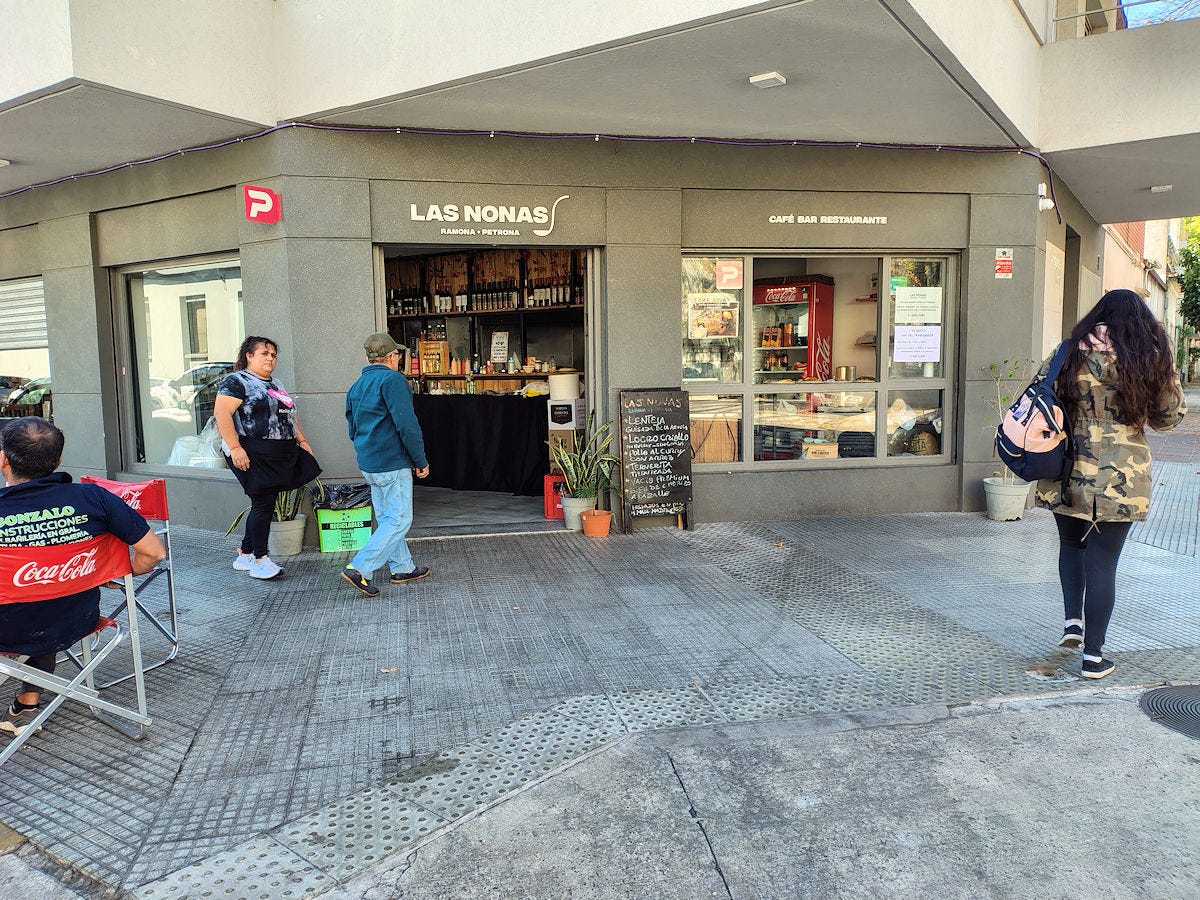





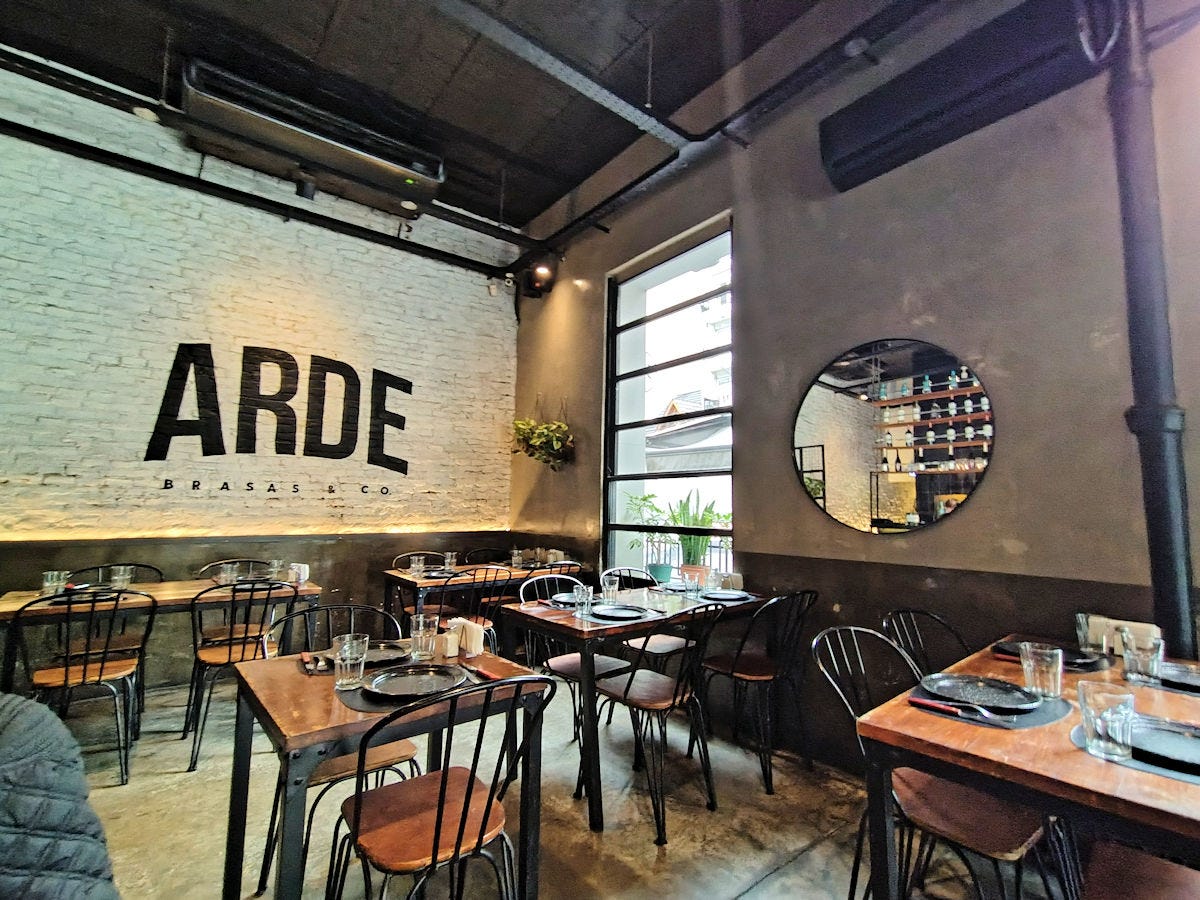
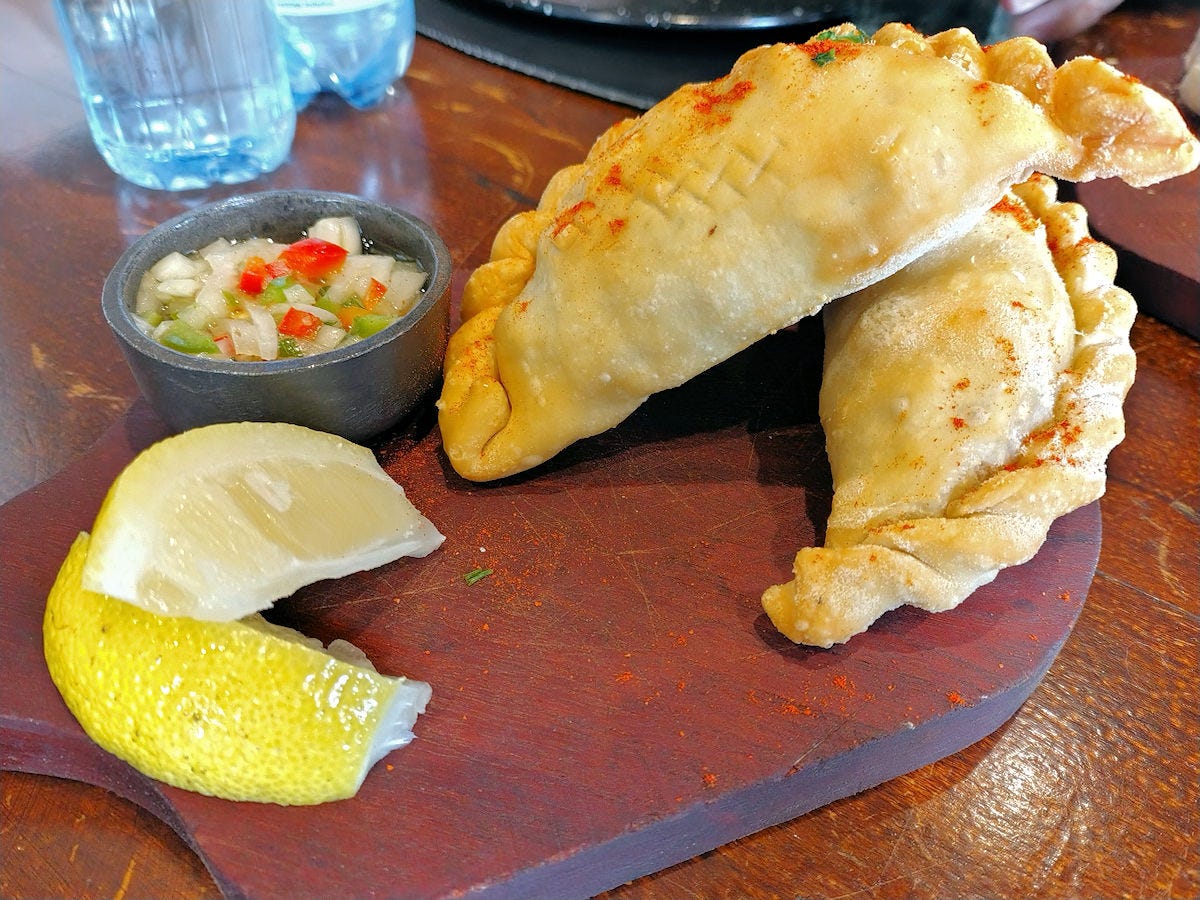

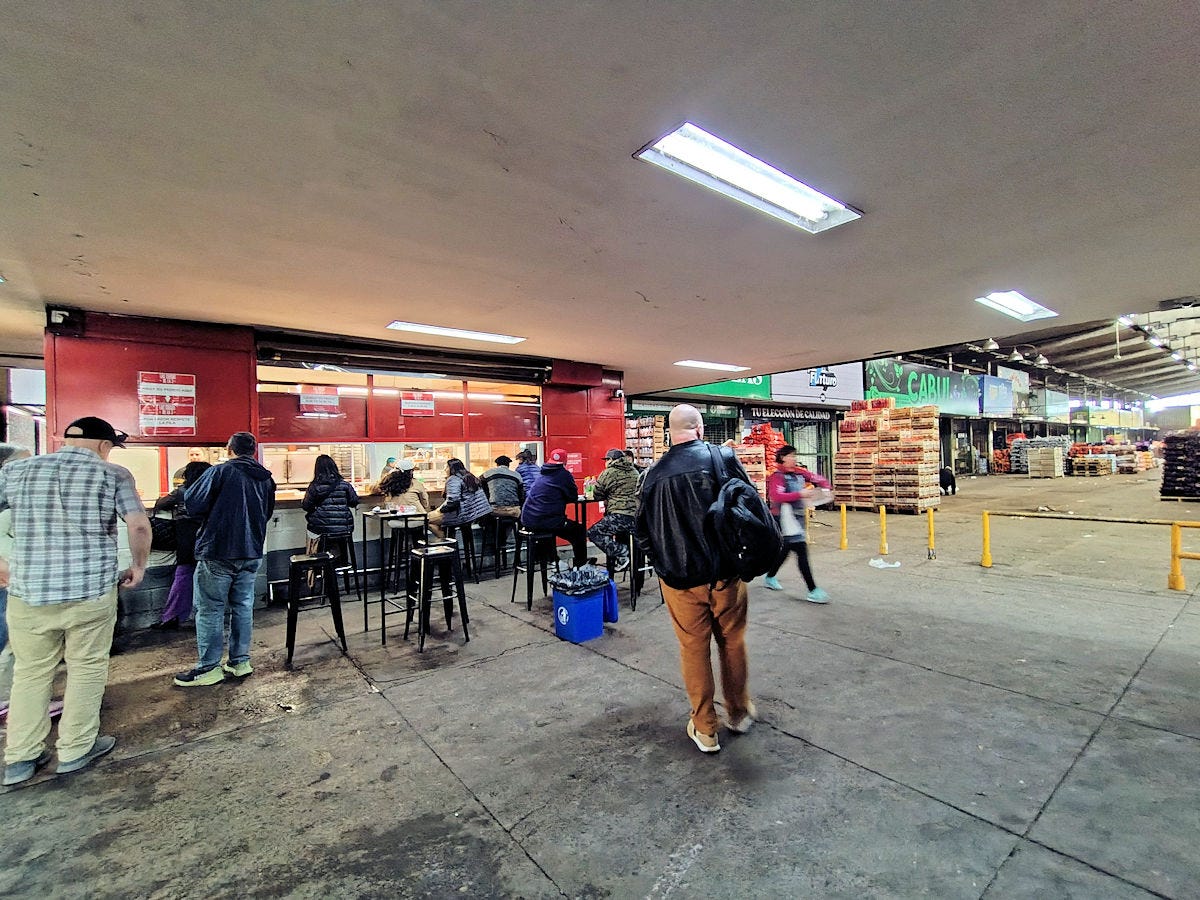
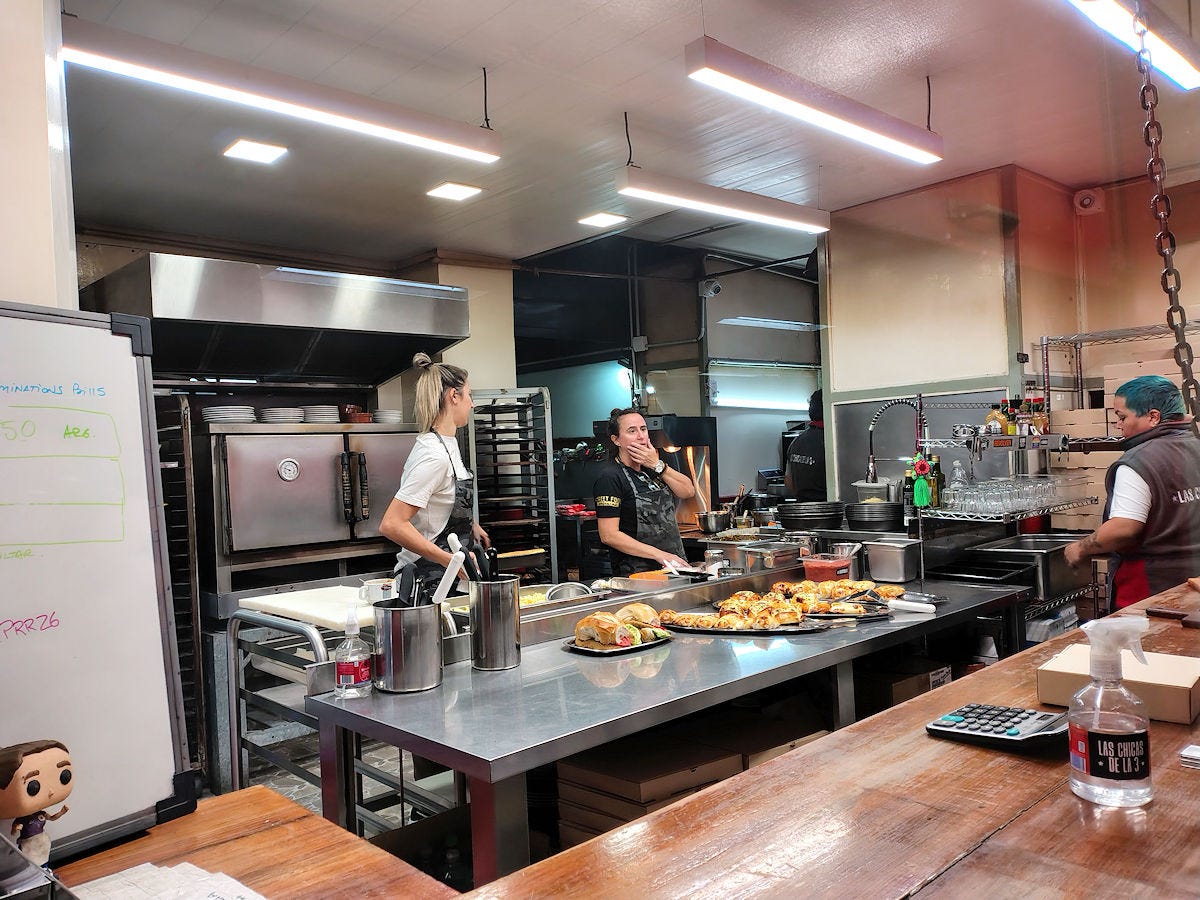

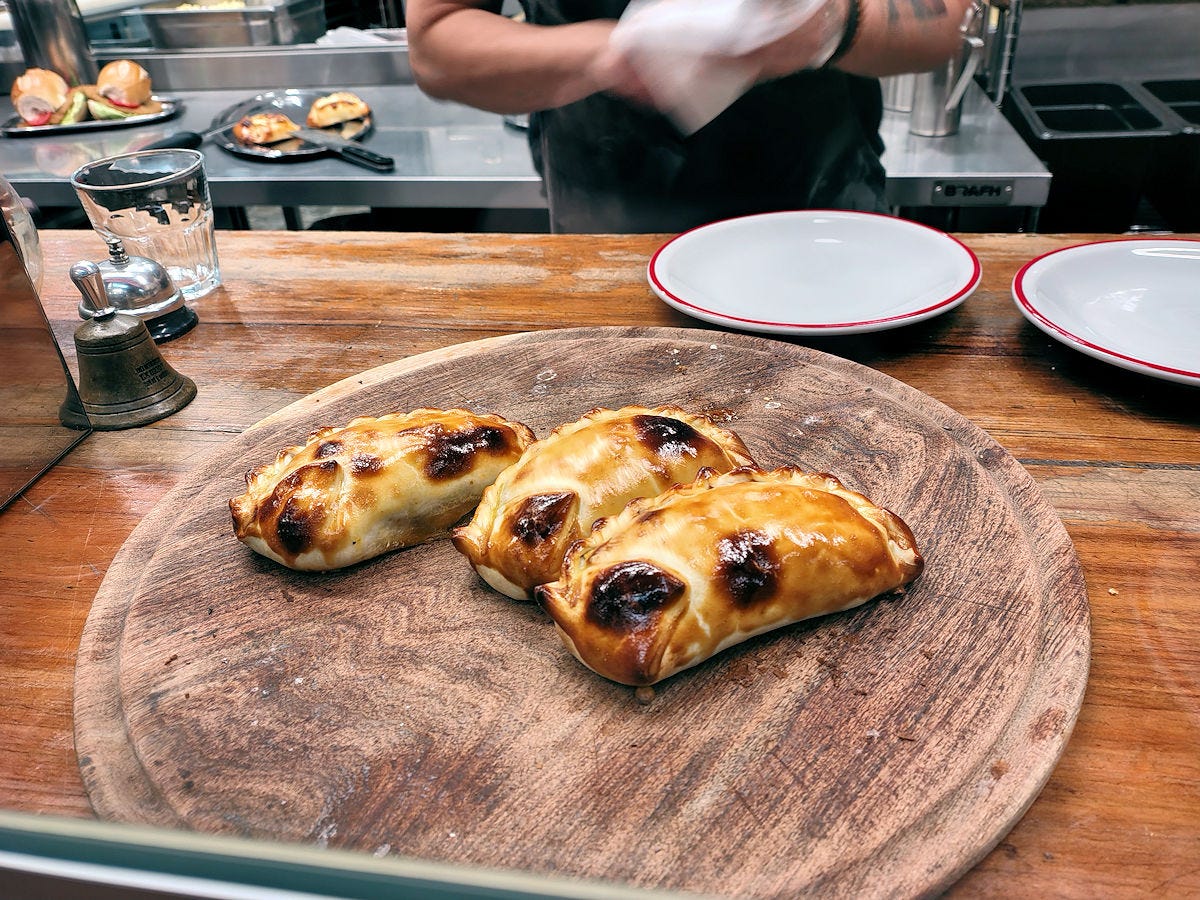



Haven't seen the Netflix Street Food series yet - is it worth checking out?